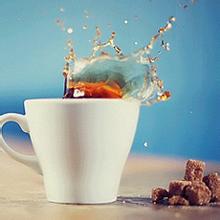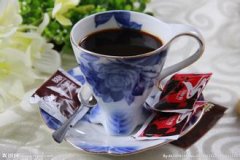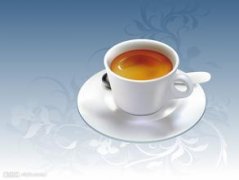A brief introduction to the history and culture of the origin and development of traditional raw bean treatment methods 90 + W2, H2, N2

90 + Based on the original excellent raw beans, continue to grade as:
Level 7: Single harvest. Rare varieties with delicate taste and special flavor are hand-selected and then processed by NinetyPlus unique method to reach the standard of more than 90 +;
Level 12: Single harvest. The website uses negative adjectives such as "cannot be identified indelibly" to indicate that this grade of beans must be a good taste that every coffee person will never forget.
Level 21 (L21), Level 39 (L39) Most of these are 90 + Gesha varieties grown on Panama estates. Ethiopian Nekisse Red, specially red-processed, also belongs to Level 39 (L39).
Level 95 (L95), Level 195 (195) are beans grown in Panama Estate's advanced microenvironment and processed through a long screening process using patented drying technology. To the highest standards of taste in design. Most of them will also be processed under the personal care of Joseph, the initiator. The annual output may only reach about ten to dozens of kilograms. It's a collector's item.
W2, H2, N2: can be understood as the traditional processing method of raw beans, and 90 + also uses them as a distinction of taste.
Ninety Plus considers coffee to be a fruit in its own right, so its own proprietary processing methods are designated as (W2),(H2), and (N2) according to taste. When you understand traditional coffee processing, you will find that small adjustments can blur the distinction between them. For example, a little washing can be added at different stages of the dense-treatment process to achieve a lighter, brighter wash taste; by controlling the degree of fermentation of the pulp, a sun can be closer to the effect of a dense-treatment, or a dense-treatment can be more like a sun.
According to the influence of fruit flavor on taste during processing, it can be divided into W2, H2 and N2 from low to high. These three flavors can also be simply understood as processing methods: W2=WASH washing treatment;H2=Honey honey treatment;N2=NATURE sun treatment:
W2: Low fruit tone; emphasis on brightness, acidity, and floral fragrance.
H2: Moderate fruity tone; sweet, fruity (rather than fruity), and tea-like.
N2: High fruity notes; emphasis on bold, sour, jam and dried fruit flavors.
Originated from the Aricha appellation series developed with S.A.Bagersh between 90 + 2006 and 2008. This coffee is called Hachira. Hachira coffee has a distinct fruit juice and floral aroma, usually with elderberry or blackberry fruit flavors and sometimes basil herbal flavors.
Origin 90 + Ethiopia, Achira region.
Altitude 1750 - 2000m
Treatment Solarization
Flavor characteristics Floral aromas, juicy, elderberry, blackberry, basil herbaceous flavors, lactose like taste.
CoffeeReview score: 94
Year: 2012 Bakers: Thirty Thirty Coffee Co.
Link: http://www.coffeereview.com/review.cfm? ID=2928
90 + flavor spectrum, there is a "Level" logo. It is the number after the name label "L". For example, L12-means Level 12. This Level is roughly proportional to the price. it represents a grading model for individual green beans: according to quality, quantity, production cost,
Important Notice :
前街咖啡 FrontStreet Coffee has moved to new addredd:
FrontStreet Coffee Address: 315,Donghua East Road,GuangZhou
Tel:020 38364473
- Prev

Characteristics of Ninety Plus Coffee 90 + Flavor and Flavor of American Top Coffee
Ninety + does not refer to all coffee with a score of more than 90. Good coffee, one year, one year. Sometimes haunt different manors, but also have different taste characteristics. Ninety + refers to a top range of coffee with 13 flavors. These coffees are only from Ninety Plus Coffee, the creator of American boutique coffee. They are all old varieties of Ethiopian heirloom (Heirloom).
- Next

A brief introduction to the flavor, taste and aroma characteristics of South American Ecuadorian coffee Galapagos coffee beans
Coffee in the Galapagos Islands has its own uniqueness. It was brought to the island around 1870. 150 years later, coffee varieties are still the original species of coffee grown at that time-the ancient bourbon species. It has never been bred by any artificial cross. And the coffee on the island is basically grown in the mountains about 500 meters above sea level. I have seen our coffee bean series.
Related
- Detailed explanation of Jadeite planting Land in Panamanian Jadeite Manor introduction to the grading system of Jadeite competitive bidding, Red bid, Green bid and Rose Summer
- Story of Coffee planting in Brenka region of Costa Rica Stonehenge Manor anaerobic heavy honey treatment of flavor mouth
- What's on the barrel of Blue Mountain Coffee beans?
- Can American coffee also pull flowers? How to use hot American style to pull out a good-looking pattern?
- Can you make a cold extract with coffee beans? What is the right proportion for cold-extracted coffee formula?
- Indonesian PWN Gold Mandrine Coffee Origin Features Flavor How to Chong? Mandolin coffee is American.
- A brief introduction to the flavor characteristics of Brazilian yellow bourbon coffee beans
- What is the effect of different water quality on the flavor of cold-extracted coffee? What kind of water is best for brewing coffee?
- Why do you think of Rose Summer whenever you mention Panamanian coffee?
- Introduction to the characteristics of authentic blue mountain coffee bean producing areas? What is the CIB Coffee Authority in Jamaica?

